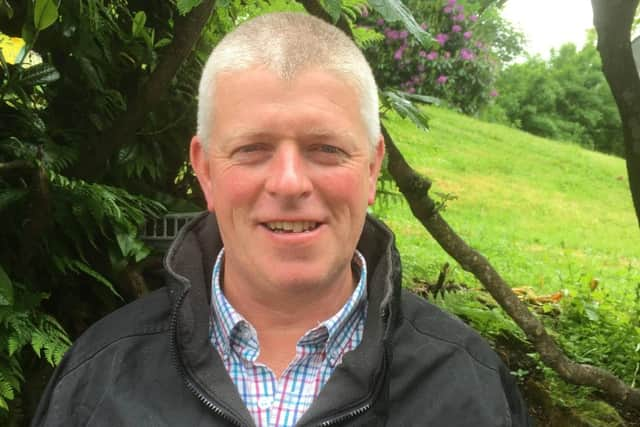Planning for efficient feeding of the dairy herd this winter
and live on Freeview channel 276
Gavin continued: “Grass silage is generally the primary winter feed for dairy cows in Northern Ireland. The variable weather conditions across the country in 2023 has resulted in silage qualities and quantities that vary significantly from farm to farm.”
2023 silage samples analysed to date indicate that grass harvested in the first two weeks of May are in general excellent quality in terms of energy and protein, but they are wetter than normal in the range 18 to 22 per cent dry matter.
Advertisement
Advertisement
Grass harvested in better weather in late May and early June are significantly drier but of a lower quality. It is a similar picture for second cut silage, quality very much determined by cutting date and weather conditions.


Gavin stated: “It should be a key priority over the next few weeks to get some idea as to the quality and quantity of forage available on your farm for feeding this winter.
“A good starting point is to get all the forages analysed to determine key information such dry matter, pH, energy (ME), protein and intake potential which will form the basis for formulating diets and in particular concentrate feeding.”
Forage analysis is a relatively inexpensive task, but it is important when collecting samples that extra care is taken to get samples that are representative of the silage in the clamp. Ideally pits and bales should be cored or sampled on several occasions during the winter.
Advertisement
Advertisement
“The next step in the winter feed plan should be to determine the quantity of forages available,” said Gavin.


“This can be done by accurately measuring the length, width, and depth of silage in the various clamps in metres to determine volume and using a conversion factor linked to the forage dry matter to convert the volume figure into quantity of fresh material.”
Gavin advised: “Dairy farmers should prepare a feed budget now so that the best quality forages can be targeted to the most productive animals. Depending on quantities available, it may be necessary to mix first, second or third cut to achieve targets in terms of dry matter, fibre, energy, and protein.
“The three weeks pre calving and the first 100 days after calving are key periods in the dairy cow’s production calendar. It is critical that the diets for these animals are formulated to maximise production, health, and fertility while considering the current economics of milk production.
Advertisement
Advertisement
“Protein remains the most expensive part of the concentrate but having accurate quality information for the forages being fed, there may be opportunities to make savings in this part of the ration this winter.”
Observe your cows closely to monitor performance. Many of the health-related issues in the herd can be traced back to the diet. Silage which, from analysis, is more acidic than normal or where grass was contaminated with soil or slurry residues can give rise to problems that may require the addition of feed additives to minimise potential dietary issues. Modern technologies can assist with the early detection of digestive issues, but they should be used as an aid and not a replacement for a good stockperson that knows their cows well.
In Northern Ireland, purchased feed is the single largest cost on dairy farms and given the economic situation at present on many farms this has brought a renewed focus on feed efficiency, the importance of maximising production from forage and using concentrates efficiently to improve herd profitability.
An important aspect of feed efficiency is to monitor how your cows are performing.
Advertisement
Advertisement
Gavin said: “Dairy farmers to keep an eye on their own feed efficiency using a simple Margin Over Concentrates (£MOC) recording system which can be accessed via DAERA Online Services. The margin over concentrates figure is basically what is left from the milk cheque once the meal costs have been covered.” Ask your CAFRE Dairy Development Adviser for advice on this programme.
In summary, Gavin concluded: “Dairy farmers should take time now to a put a feeding plan in place for their herd this winter. Knowledge of the quantity and quality of forage available on the farm will be central to this.
“Ensure feeders are calibrated and working properly, allow adequate feed space allowance, and keep feed fresh by pushing it up regularly are simple practical steps that will help maximise the milk produced from forage. Monitoring feed efficiency closely will pay dividends this winter.”